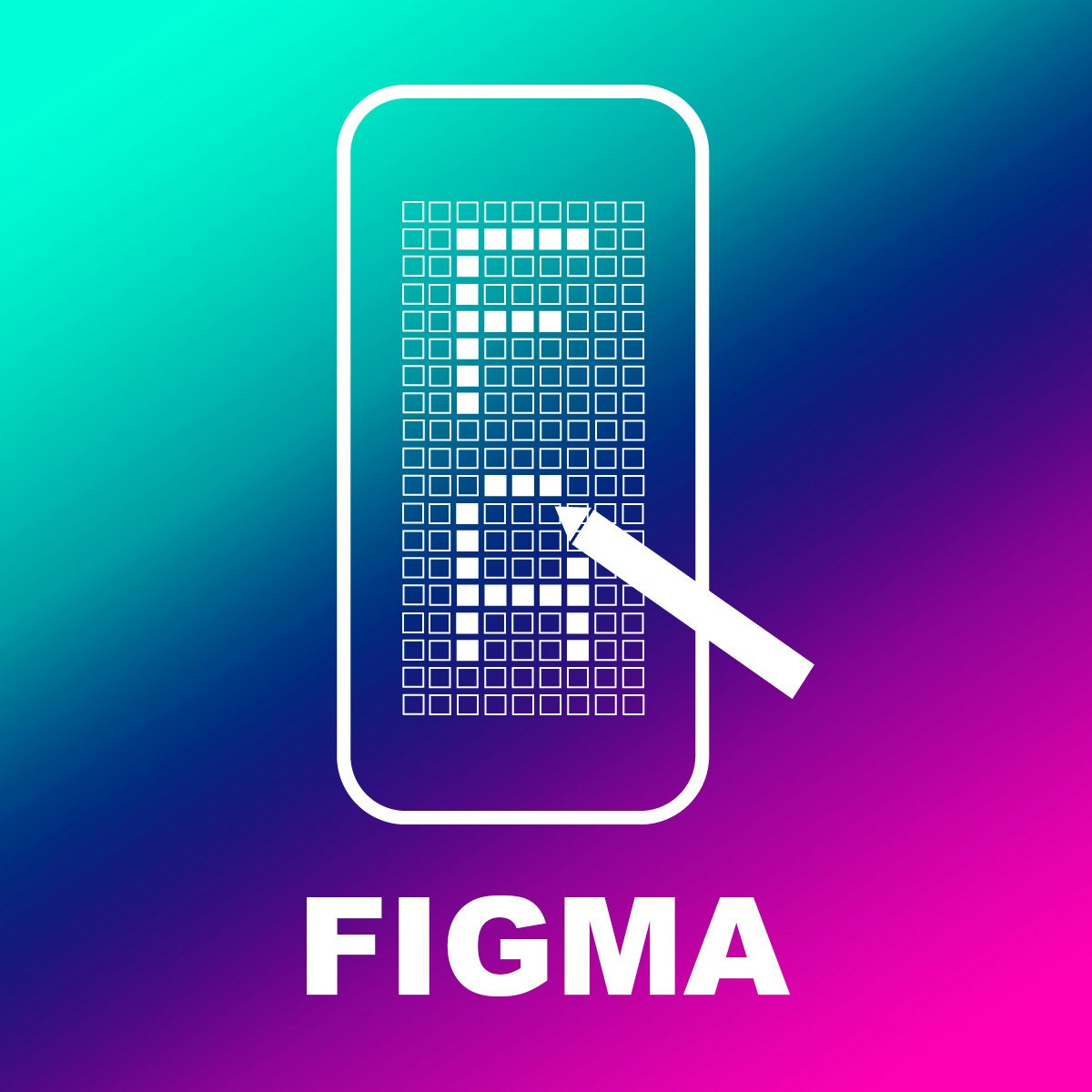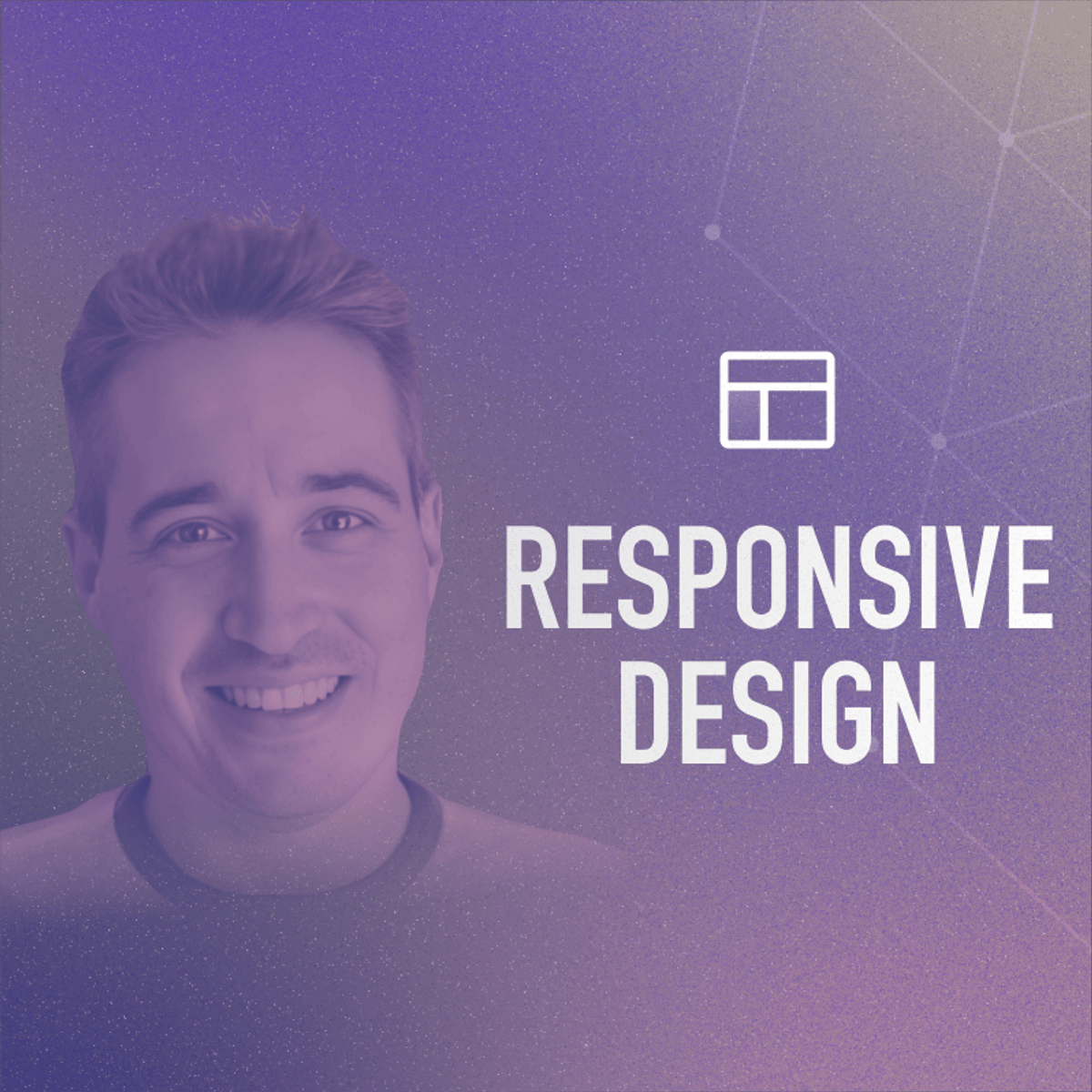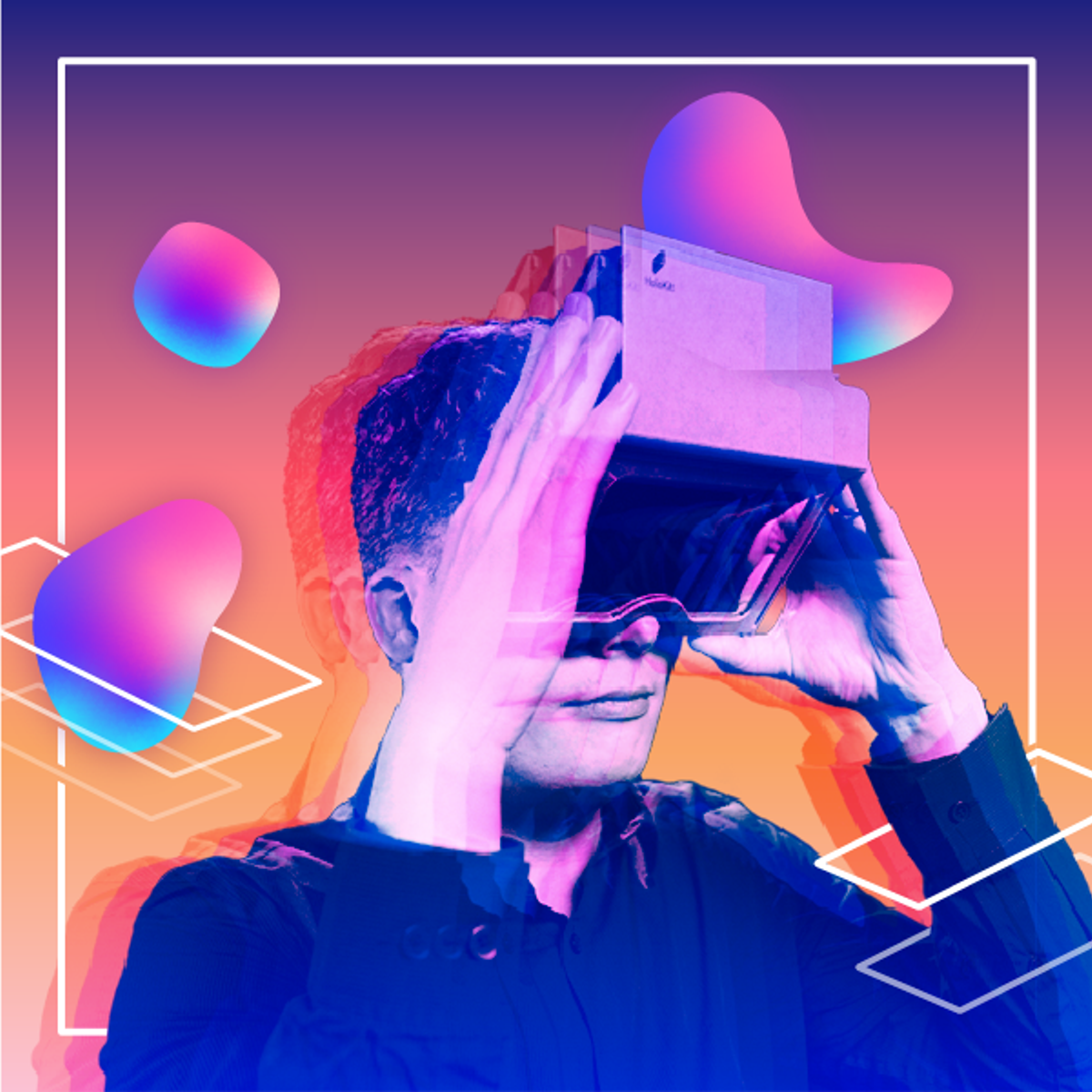Visual Designer
Visual Designer
Visual design focuses on the aesthetics of a website, app, or digital product, shaping the user's experience through elements like images, typography, color, and layout. It's about creating a look and feel that is both beautiful and functional, ensuring that the visual presentation effectively communicates the intended message and guides the user seamlessly.
Working as a visual designer often involves translating brand identities into compelling digital experiences. This might mean crafting engaging interfaces for mobile apps, designing visually appealing websites, or developing consistent visual language across various digital platforms. The role blends artistic sensibility with a deep understanding of user interaction principles.
Introduction to Visual Design
Defining Visual Design and Its Scope
Visual design is a discipline centered on the look and feel of digital products. It involves the strategic use of imagery, color, shapes, typography, and form to enhance usability and improve the user experience. Visual designers work to ensure that the interface is aesthetically pleasing, aligns with the brand's identity, and effectively guides user interaction.
The scope of visual design extends beyond mere decoration; it encompasses the entire visual journey of the user. This includes creating mood boards, style guides, high-fidelity mockups, and sometimes interactive prototypes. The goal is to produce a cohesive and engaging visual narrative that resonates with the target audience and achieves the product's objectives.
Ultimately, visual designers bridge the gap between functionality and aesthetics. They ensure that a product not only works well but also looks good and feels intuitive. Their work directly impacts user perception, engagement, and overall satisfaction with a digital product or service.
Distinguishing Visual Design from Related Fields
While often used interchangeably, visual design differs from graphic design and User Experience (UX)/User Interface (UI) design. Graphic design traditionally focuses on static visuals for print or digital media, such as logos, brochures, and advertisements, emphasizing communication through composition and typography.
User Experience (UX) design is broader, concentrating on the overall experience a user has with a product, including usability, accessibility, and efficiency. UX designers conduct research, create user flows, and test prototypes to ensure the product meets user needs. User Interface (UI) design, a subset of UX, focuses specifically on the layout and interactivity of the interface elements—buttons, menus, forms—ensuring they are intuitive and easy to navigate.
Visual design overlaps significantly with UI design but places a stronger emphasis on the aesthetics and brand expression of the interface. A visual designer ensures the final product looks polished and visually communicates the brand's personality, often working closely with UX and UI designers to achieve a harmonious balance between form and function.
Understanding these roles is crucial for navigating the design landscape.
Core Objectives in Modern Industries
In today's digital-first world, the primary objective of a visual designer is to create visually compelling interfaces that capture user attention and enhance engagement. This involves crafting aesthetics that align with the brand's message and resonate with the target audience, ultimately driving user action and loyalty.
Another key goal is ensuring visual consistency across all digital touchpoints. Visual designers develop and maintain style guides and design systems that dictate the use of color palettes, typography, iconography, and imagery. This consistency reinforces brand identity and provides a predictable, trustworthy user experience.
Visual designers also aim to improve usability through thoughtful visual hierarchy and clear communication. By strategically arranging elements, using color and contrast effectively, and choosing appropriate typography, they guide users through the interface intuitively, making information easy to find and tasks simple to complete.
These objectives highlight the crucial role visual designers play in shaping successful digital products.
Core Skills for Visual Designers
Mastering Technical Skills
Proficiency in industry-standard design software is fundamental for a visual designer. Tools like Adobe Creative Suite (including Photoshop, Illustrator, and InDesign) remain staples for image editing, vector graphics, and layout design. Increasingly, interface design tools like Figma and Sketch are essential for creating mockups, prototypes, and collaborating with teams.
A strong grasp of typography is another critical technical skill. This involves understanding typeface anatomy, font pairing, hierarchy, kerning, leading, and tracking to ensure text is legible, aesthetically pleasing, and effectively communicates information. Knowledge of web fonts and responsive typography is also vital for digital projects.
Furthermore, visual designers need a basic understanding of front-end development principles (HTML, CSS) to effectively collaborate with developers. While coding isn't always required, knowing the possibilities and limitations of web technologies helps create designs that are feasible to implement.
Developing Essential Soft Skills
Effective communication is paramount for visual designers. They must articulate design decisions clearly to clients, stakeholders, and team members, explaining the reasoning behind their choices and incorporating feedback constructively. Presenting concepts visually and verbally is a regular part of the job.
Collaboration is another key soft skill. Visual designers rarely work in isolation; they are part of multidisciplinary teams, often including UX designers, developers, product managers, and marketers. The ability to work effectively with others, share ideas, and contribute to a shared vision is crucial for project success.
Client management skills are also important, especially for freelancers or agency designers. This involves understanding client needs, managing expectations, negotiating timelines and deliverables, and building strong professional relationships. Problem-solving and adaptability are necessary to navigate project constraints and evolving requirements.
Understanding Design Principles
A solid foundation in fundamental design principles is non-negotiable. Understanding color theory—how colors interact, evoke emotions, and create harmony or contrast—is essential for creating effective and appealing visual identities. Designers use color strategically to guide attention, convey meaning, and establish mood.
Mastery of composition involves arranging visual elements (text, images, shapes) within a layout to create balance, hierarchy, and flow. Principles like proximity, alignment, repetition, contrast, and white space help organize information logically and create a visually engaging experience for the user.
Understanding branding is also critical. Visual designers translate a company's brand strategy—its values, personality, and target audience—into a tangible visual language. This involves creating or adhering to brand guidelines, ensuring consistency in logos, color palettes, typography, and imagery across all platforms to build brand recognition and trust.
These foundational books offer deep insights into design principles and user experience, valuable for any aspiring visual designer.
Tools and Technologies
Industry-Standard Software
Visual designers rely on a suite of software tools to bring their ideas to life. For vector graphics, essential for creating scalable logos, icons, and illustrations, Adobe Illustrator remains a dominant force. Proficiency in vector manipulation is fundamental for creating clean and versatile design assets.
For user interface design and prototyping, Figma has rapidly become an industry favorite due to its collaborative features, web-based accessibility, and robust prototyping capabilities. Sketch is another popular choice, particularly within the Apple ecosystem. Adobe XD also offers comprehensive UI/UX design and prototyping tools.
These courses provide hands-on training in Figma, a crucial tool for modern visual and UI/UX design workflows.
Raster graphics editors like Adobe Photoshop are indispensable for image manipulation, photo editing, and creating detailed digital paintings or textures. While less central to UI layout than Figma or Sketch, Photoshop remains vital for asset creation and refinement.
Emerging Technologies in Design
The field of visual design is constantly evolving, influenced by technological advancements. Artificial Intelligence (AI) is increasingly integrated into design tools, offering features like automated layout suggestions, image generation (e.g., Adobe Firefly, Midjourney), and content-aware editing, potentially speeding up workflows and sparking new creative directions.
Augmented Reality (AR) and Virtual Reality (VR) are opening new frontiers for visual design. Designing immersive experiences requires understanding spatial interfaces, 3D modeling, and interaction patterns unique to these mediums. Tools like Unity and Unreal Engine, alongside specialized design software, are becoming relevant.
Voice User Interfaces (VUIs) and conversational design also present new challenges and opportunities. Visual designers may contribute to the visual elements accompanying voice interactions or ensure brand consistency across multimodal experiences.
File Management and Version Control
Efficient file management is crucial for staying organized, especially when working on complex projects with numerous assets and iterations. Establishing clear naming conventions, folder structures, and asset libraries helps maintain order and facilitates collaboration within design teams.
Version control systems, traditionally used in software development (like Git), are becoming more relevant in design, particularly with tools like Figma that have built-in version history. Abstract is another platform specifically designed for version control and collaboration among designers using Sketch files.
Cloud storage and collaboration platforms like Google Drive, Dropbox, and Miro are essential for sharing files, gathering feedback, and working seamlessly with remote teams. Understanding how to manage shared assets and maintain consistency across distributed workflows is a key operational skill.
Formal Education Pathways
Relevant Degrees and Programs
Many visual designers enter the field with a formal education in design-related disciplines. Bachelor's degrees in Graphic Design, Fine Arts (BFA) with a concentration in design, Communication Design, Digital Media, or Interaction Design provide a strong theoretical and practical foundation.
These programs typically cover core design principles, art history, typography, color theory, drawing, and software proficiency. They often include studio courses where students develop projects and build a portfolio under the guidance of experienced faculty. Internships are frequently part of the curriculum, offering valuable real-world experience.
For those seeking deeper specialization or careers in academia or research, Master's degrees (MFA or MA) in related fields are available. These advanced programs allow for in-depth exploration of specific areas like interaction design, information visualization, or design research. Some may pursue PhDs focusing on human-computer interaction or design theory.
Aligning Coursework with Industry Needs
University programs strive to balance foundational theory with practical skills relevant to the current job market. Effective curricula integrate training in industry-standard software (like Adobe Creative Suite and Figma) alongside conceptual development and critical thinking.
Project-based learning is common, simulating real-world design challenges where students research, ideate, design, and present solutions. Courses focusing on user experience (UX) principles, user interface (UI) design, web design, mobile app design, and branding are particularly valuable for aspiring visual designers.
It's beneficial for students to choose programs or electives that emphasize portfolio development and provide opportunities to collaborate on team projects, mirroring industry practices. Seeking feedback from industry professionals through portfolio reviews or guest lectures can also help align skills with employer expectations.
Research Opportunities at Advanced Levels
Graduate programs, particularly at the Master's and PhD levels, offer opportunities for research in various aspects of visual design and related fields. Research areas might include human-computer interaction (HCI), information visualization, accessibility design, design ethics, sustainable design practices, or the impact of emerging technologies like AI and VR on design.
Students might investigate new methods for user research, develop novel interaction techniques, explore the cognitive aspects of visual perception in interface design, or contribute to the development of design theory. This research often involves collaboration with faculty, publishing in academic journals, and presenting at conferences.
While a research-focused path is less common for typical industry roles, it can lead to careers in academia, research labs, or specialized consulting positions where deep expertise is required. Understanding research methodologies can also inform design practice by fostering evidence-based decision-making.
Online Learning and Skill Development
Building a Portfolio Through Online Education
For those transitioning careers or without access to traditional degree programs, online learning offers a viable path to becoming a visual designer. Numerous platforms provide courses covering everything from design fundamentals to advanced software techniques and specialization areas like UI/UX or mobile app design.
Online courses often emphasize practical application, guiding learners through projects that can form the basis of a professional portfolio. Completing courses on platforms like Coursera, Udemy, or specialized design bootcamps can equip individuals with in-demand skills and tangible work samples to showcase to potential employers.
OpenCourser is a great resource for finding relevant courses across various providers. You can easily browse design courses, compare options, read reviews, and save potential courses to your list using the "Save to List" feature, helping you curate your learning journey.
Supplementing Formal Education
Even for those pursuing or holding formal degrees, online courses serve as valuable supplements. They can help bridge gaps in specific software skills, introduce emerging technologies not yet covered in traditional curricula, or offer deeper dives into specialized topics like interaction design, data visualization, or accessibility.
University students can use online tutorials to reinforce classroom learning or master tools like Figma or Adobe XD more quickly. Professionals can use online learning for continuous development, staying updated on the latest trends, software updates, and design methodologies without committing to a full-time program.
Mixing formal education with targeted online learning allows for a customized and comprehensive skill set. Many online courses offer certificates upon completion, which can be added to resumes or LinkedIn profiles, demonstrating a commitment to ongoing learning. Check out the OpenCourser Learner's Guide for tips on leveraging certificates.
This course explores design thinking, a valuable framework often taught online.
Project-Based Learning Strategies
Regardless of the learning path, hands-on experience is crucial. Project-based learning, whether through formal coursework, online challenges, or self-initiated projects, is the best way to solidify skills and build a compelling portfolio. The goal is to move beyond exercises and create realistic, end-to-end design solutions.
Seek opportunities to work on real-world problems, even if hypothetical. Redesign an existing app or website, create a brand identity for a fictional company, or develop a visual system for a specific user need. Document your process—research, sketches, iterations, final designs—to demonstrate your thinking and problem-solving abilities.
Participating in design challenges or contributing to open-source projects can also provide valuable experience and portfolio pieces. Collaborating with others, even informally, helps develop teamwork and communication skills. Remember, a strong portfolio showcasing diverse, well-executed projects is often the most critical factor in landing a visual design job.
These books offer practical guidance and strategic thinking for designers.
Career Progression in Visual Design
Entry-Level Roles
Graduates or career switchers typically start in entry-level positions like Junior Visual Designer, Graphic Designer, Production Artist, or UI Designer. In these roles, individuals often work under the supervision of senior designers, focusing on executing specific design tasks, creating assets, making revisions based on feedback, and learning established workflows and tools.
Responsibilities might include designing specific screens or components for an app or website, creating marketing materials like social media graphics or email templates, preparing files for developers, and assisting with user interface refinement. These roles provide essential hands-on experience and exposure to different aspects of the design process.
Building a strong portfolio, mastering core software, understanding design principles, and demonstrating a willingness to learn are key to securing these initial positions. Internships during education or volunteer design work can significantly improve prospects.
Mid-Career Transitions and Roles
With several years of experience, visual designers can advance to mid-level roles like Visual Designer, UI Designer, or Product Designer. At this stage, they typically take on more responsibility, lead smaller projects or features, contribute to design system development, and mentor junior designers.
Further progression can lead to specialized or leadership roles such as Senior Visual Designer, Art Director, or Brand Strategist. Art Directors oversee the visual style and execution of projects, leading design teams and ensuring creative quality. Brand Strategists focus on defining and evolving a brand's visual identity and messaging across various platforms.
Some designers may specialize in areas like interaction design, motion design, or data visualization. Others might transition towards User Experience (UX) design, focusing more on research, usability, and overall product strategy. Developing strong conceptual thinking, strategic planning, and leadership skills facilitates these transitions.
Leadership Positions
Experienced visual designers with strong leadership and strategic capabilities can move into senior management roles. Positions like Design Manager, Creative Director, or Head of Design involve overseeing entire design teams, setting the creative vision for products or departments, managing budgets, and collaborating with executive leadership.
Creative Directors are responsible for the overall creative output of a team or agency, ensuring alignment with brand goals and maintaining high standards of design excellence. Design Managers focus more on team operations, mentorship, process improvement, and resource allocation.
At the highest levels, individuals might become Vice Presidents of Design or Chief Design Officers, shaping the company's overall design strategy and culture. These roles require a deep understanding of business objectives, strong leadership acumen, and the ability to advocate for design thinking across the organization.
Salary expectations vary based on experience, location, industry, and company size. Grounding searches suggest entry-level visual designers can expect salaries ranging roughly from $50,000 to $70,000 annually in the US, with mid-career professionals earning $70,000 to $100,000+, and senior/leadership roles potentially exceeding $120,000-$150,000 or more. Always consult up-to-date regional salary surveys for precise figures.
Industry Trends Impacting Visual Designers
Remote Work and Global Collaboration
The rise of remote work has significantly impacted the design industry. Visual designers increasingly collaborate with teams distributed across different time zones and geographies. This necessitates strong communication skills, proficiency with online collaboration tools like Figma, Miro, and Slack, and adaptability to asynchronous workflows.
This shift offers greater flexibility and access to a global talent pool for employers, but also requires designers to be self-disciplined and adept at managing their time effectively. Building rapport and fostering creativity within remote teams presents unique challenges and opportunities.
The global nature of digital products also means designers must often consider cultural nuances and international audiences in their work, demanding greater cultural sensitivity and research into localization best practices.
Sustainability and Ethical Design
There is a growing emphasis on sustainability within the design field. For visual designers, this can manifest in choices related to digital resource consumption (e.g., optimizing images for web performance to reduce energy use) or advocating for ethical design practices, such as avoiding dark patterns that manipulate users.
Ethical considerations also extend to accessibility, ensuring designs are usable by people with diverse abilities. This involves adhering to Web Content Accessibility Guidelines (WCAG), designing with sufficient color contrast, providing alternative text for images, and considering keyboard navigation.
Designers are increasingly called upon to consider the broader societal impact of their work, promoting inclusivity, privacy, and responsible use of technology through their design choices. Awareness of these issues is becoming an important aspect of the role.
AI, Automation, and the Future of Visuals
Artificial Intelligence (AI) is poised to transform aspects of visual design. AI-powered tools can automate repetitive tasks, generate design variations, assist with image creation and editing, and even suggest layout options. While some fear displacement, many see AI as a potential collaborator that can augment creativity and efficiency.
Designers will likely need to adapt by learning how to leverage AI tools effectively, focusing on higher-level conceptual thinking, strategy, and creative direction that machines cannot replicate. Understanding the capabilities and limitations of AI, as well as the ethical implications of using AI-generated content, will be crucial.
The ongoing evolution of technology means visual designers must commit to lifelong learning, continually updating their skills and adapting to new tools and workflows to remain relevant in a dynamic industry.
Challenges in Visual Design Careers
Balancing Client Expectations and Creative Vision
A common challenge for visual designers is navigating the tension between their own creative vision and the expectations or constraints imposed by clients or stakeholders. Clients may have specific aesthetic preferences, budget limitations, or business goals that influence design direction.
Successfully managing this requires strong communication, negotiation, and presentation skills. Designers must be able to articulate the rationale behind their design choices, demonstrate how their solutions meet project objectives, and be open to feedback and compromise while advocating for design best practices.
Finding the right balance between satisfying client needs and maintaining creative integrity is an ongoing process that requires patience, professionalism, and a collaborative mindset. Setting clear expectations and establishing a transparent design process from the outset can help mitigate potential conflicts.
Keeping Pace with Rapid Technological Change
The digital landscape evolves rapidly, with new software, tools, platforms, and design trends emerging constantly. Visual designers must dedicate time and effort to continuous learning to stay current. Failing to keep up can lead to outdated skills and reduced competitiveness in the job market.
This involves regularly exploring new software features (like updates to Figma or Adobe Creative Suite), experimenting with emerging technologies (like AI design tools), staying informed about evolving web standards and accessibility guidelines, and understanding new platform conventions (e.g., designing for wearables or voice interfaces).
Balancing project deadlines with ongoing professional development can be demanding. Proactively seeking learning opportunities through online courses, workshops, conferences, and industry publications is essential for long-term career sustainability.
Explore new tools and techniques through online learning resources.
Navigating Job Market Dynamics
While demand for skilled visual designers remains strong, particularly in tech and digital product development, certain sectors or entry-level positions can be competitive. The accessibility of design tools and online education has increased the number of individuals entering the field, making it crucial to stand out.
Building a strong, diverse portfolio that showcases problem-solving skills and high-quality execution is paramount. Specializing in a niche area (like interaction design, data visualization, or a specific industry) can also enhance marketability. Networking and demonstrating strong soft skills are equally important.
Designers may face periods of intense workload, tight deadlines, and the pressure to constantly innovate. Freelancers, in particular, must manage the uncertainties of securing projects and handling administrative tasks alongside their creative work. Resilience and adaptability are key attributes for navigating these career challenges.
This book provides insights into usability testing, a key skill for demonstrating design effectiveness.
Global Opportunities and Markets
Regional Variations in Demand
The demand for visual designers can vary significantly by region. Major technology hubs (like Silicon Valley, Seattle, New York, London, Berlin, Singapore) typically have a high concentration of opportunities in software companies, startups, and digital agencies, often commanding higher salaries but also facing higher competition and cost of living.
Traditional markets may have more opportunities in advertising agencies, publishing houses, or established corporations, potentially focusing more on graphic design or marketing collateral. The rise of remote work, however, is blurring these geographic distinctions, allowing designers to work for companies located anywhere in the world.
Understanding regional market dynamics, salary expectations, and industry focus can help designers target their job search effectively, whether seeking local employment or remote opportunities.
Cultural Adaptation in Design
When designing for global audiences, visual designers must be sensitive to cultural differences in aesthetics, symbolism, color perception, and communication styles. What resonates positively in one culture might be misinterpreted or even offensive in another.
This requires research into the target audience's cultural context and potentially adapting visual elements, imagery, and layouts accordingly. Collaboration with local teams or cultural consultants can be invaluable in ensuring designs are appropriate and effective across diverse markets.
Successfully navigating cross-cultural design challenges demonstrates valuable adaptability and global awareness, enhancing a designer's profile, especially for roles in multinational companies or global agencies.
Freelance Platforms and Global Clientele
Freelancing offers visual designers the opportunity to work with clients from around the globe, expanding their potential market reach significantly. Online platforms like Upwork, Fiverr, Toptal, and specialized design marketplaces connect freelancers with international projects.
Working with global clients requires managing time zone differences, navigating international payment methods, understanding diverse cultural expectations, and potentially dealing with language barriers. Strong communication and project management skills are essential for success in the global freelance market.
Building an online presence through a professional portfolio website and active participation in online design communities can attract international clients. While freelancing offers flexibility, it also demands business acumen and self-discipline to thrive in a competitive global landscape.
Frequently Asked Questions
What is the average salary range for visual designers?
Salaries for visual designers vary widely based on factors like experience level, geographic location, industry, company size, and specific responsibilities. As a general estimate for the US market, entry-level positions might range from $50,000 to $70,000 per year.
Mid-level designers with several years of experience can typically expect salaries between $70,000 and $100,000+. Senior designers, art directors, or design leads often earn upwards of $100,000, with leadership roles like Creative Director potentially reaching $150,000 or significantly more.
It's crucial to consult recent salary surveys from reputable sources like Robert Half or industry-specific reports for the most accurate and up-to-date figures relevant to your specific location and experience level. Remote roles may have different compensation structures.
Can I become a visual designer without a formal degree?
Yes, it is possible to become a visual designer without a traditional four-year degree. Many successful designers are self-taught or have completed intensive bootcamps or online certification programs. The most critical factor for employers is typically the quality of your portfolio and demonstrated skills.
A strong portfolio showcasing a range of well-executed projects, proficiency in industry-standard software, a solid understanding of design principles, and effective problem-solving abilities can often outweigh the lack of a formal degree. Building practical experience through freelance work, personal projects, or internships is key.
While a degree can provide a structured foundation and valuable networking opportunities, dedication, continuous learning, and a compelling body of work are essential regardless of the educational path taken. Online platforms like OpenCourser offer extensive resources for self-directed learning.
How competitive is the job market for visual designers?
The job market competitiveness varies. Demand for skilled visual designers, especially those with expertise in UI/UX, digital product design, and interaction design, is generally strong, driven by the growth of the tech industry and the increasing importance of digital presence for businesses.
However, entry-level positions can be quite competitive due to the number of graduates and career changers entering the field. Standing out requires a polished portfolio, proficiency in current tools (like Figma), and ideally some specialized skills or relevant internship experience.
Market conditions can also fluctuate based on economic trends and specific industry demands. Continuous skill development, networking, and potentially specializing in a high-demand area can improve job prospects in a competitive landscape.
What industries hire the most visual designers?
Visual designers find employment across a wide range of industries. The technology sector (software companies, SaaS providers, mobile app developers) is a major employer, needing designers for digital products and interfaces. Digital marketing and advertising agencies also heavily rely on visual designers for campaigns, websites, and branding.
Other significant industries include e-commerce, media and publishing (for web and digital content), entertainment (gaming, streaming services), finance (for apps and websites), and education (e-learning platforms, university websites). Large corporations across various sectors often have in-house design teams.
Freelancing is also common, allowing designers to work with clients from diverse industries. The specific skills required might vary depending on the industry's focus (e.g., data visualization in finance vs. immersive experiences in gaming).
How important is coding knowledge for visual designers?
While deep coding expertise is usually not required for a visual design role, a basic understanding of front-end technologies (HTML, CSS, and sometimes JavaScript) is highly beneficial. This knowledge helps designers create realistic and implementable designs, communicate more effectively with developers, and understand the technical constraints and possibilities.
Knowing HTML/CSS allows designers to understand how their visual concepts translate into actual web elements, leading to more practical layout decisions and smoother handoffs to development teams. Some roles, particularly those blending UI design and front-end development, might require stronger coding skills.
Ultimately, the importance depends on the specific role and company. However, having at least foundational knowledge of web technologies generally enhances a visual designer's value and collaboration capabilities.
What are common misconceptions about the role?
One common misconception is that visual design is purely about making things "pretty." While aesthetics are important, visual design is deeply rooted in problem-solving, communication strategy, and enhancing usability. Designers make intentional choices based on user needs, brand goals, and design principles, not just personal taste.
Another misconception is that anyone proficient with design software can be a visual designer. Technical skill with tools is necessary but not sufficient. Strong visual designers possess critical thinking, creativity, communication skills, and a deep understanding of design theory, typography, color, and composition.
Finally, some may confuse visual design with graphic design or UI design exclusively. While there's overlap, visual design specifically emphasizes the overall look and feel, brand expression, and aesthetic coherence of a digital product's interface, bridging functionality with visual appeal.
Embarking on a career as a Visual Designer offers a path filled with creativity, problem-solving, and the opportunity to shape how people interact with technology. It requires a blend of artistic talent, technical proficiency, and a commitment to continuous learning. While challenges exist, the ability to create beautiful, functional, and engaging digital experiences makes it a rewarding field for passionate individuals.





























